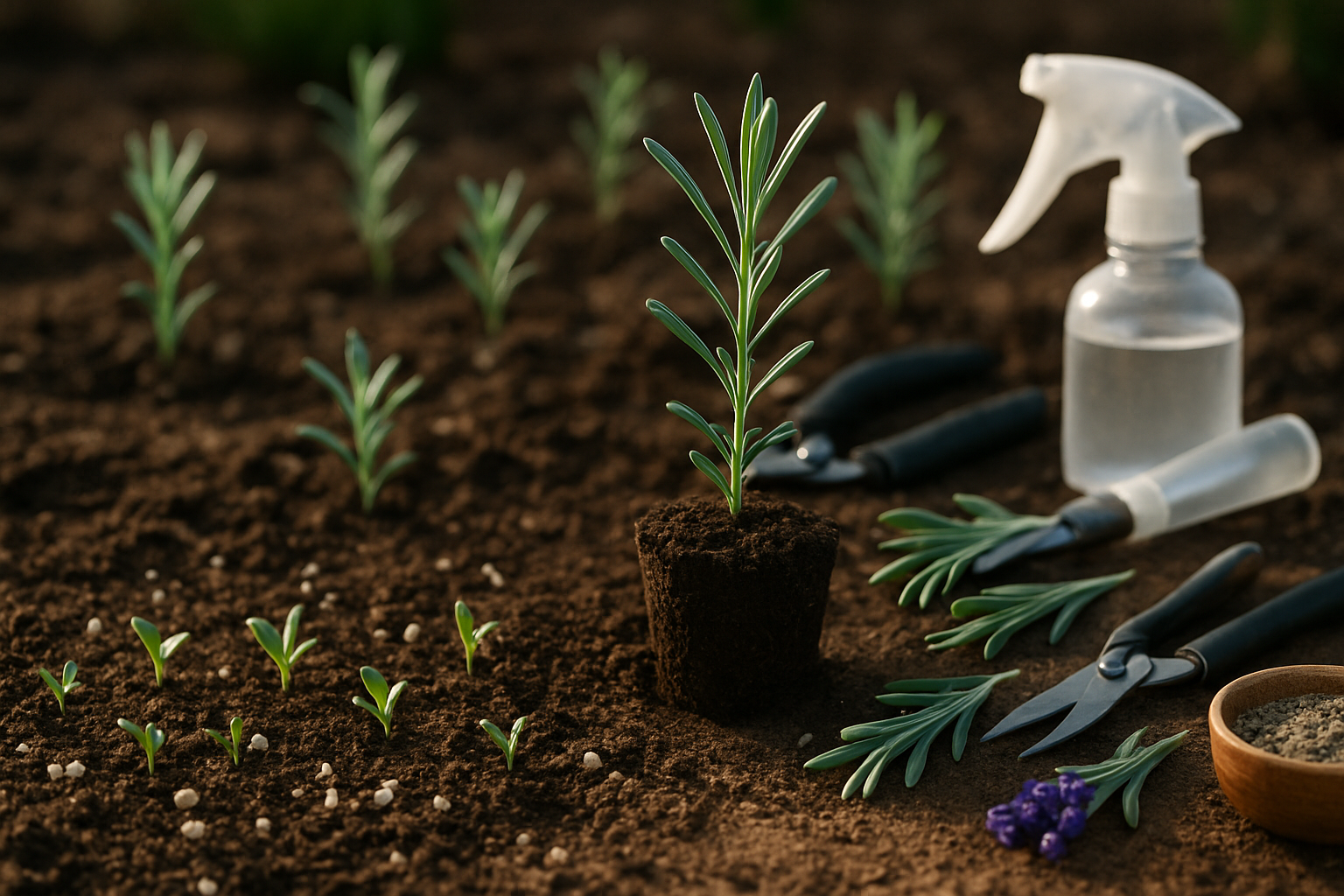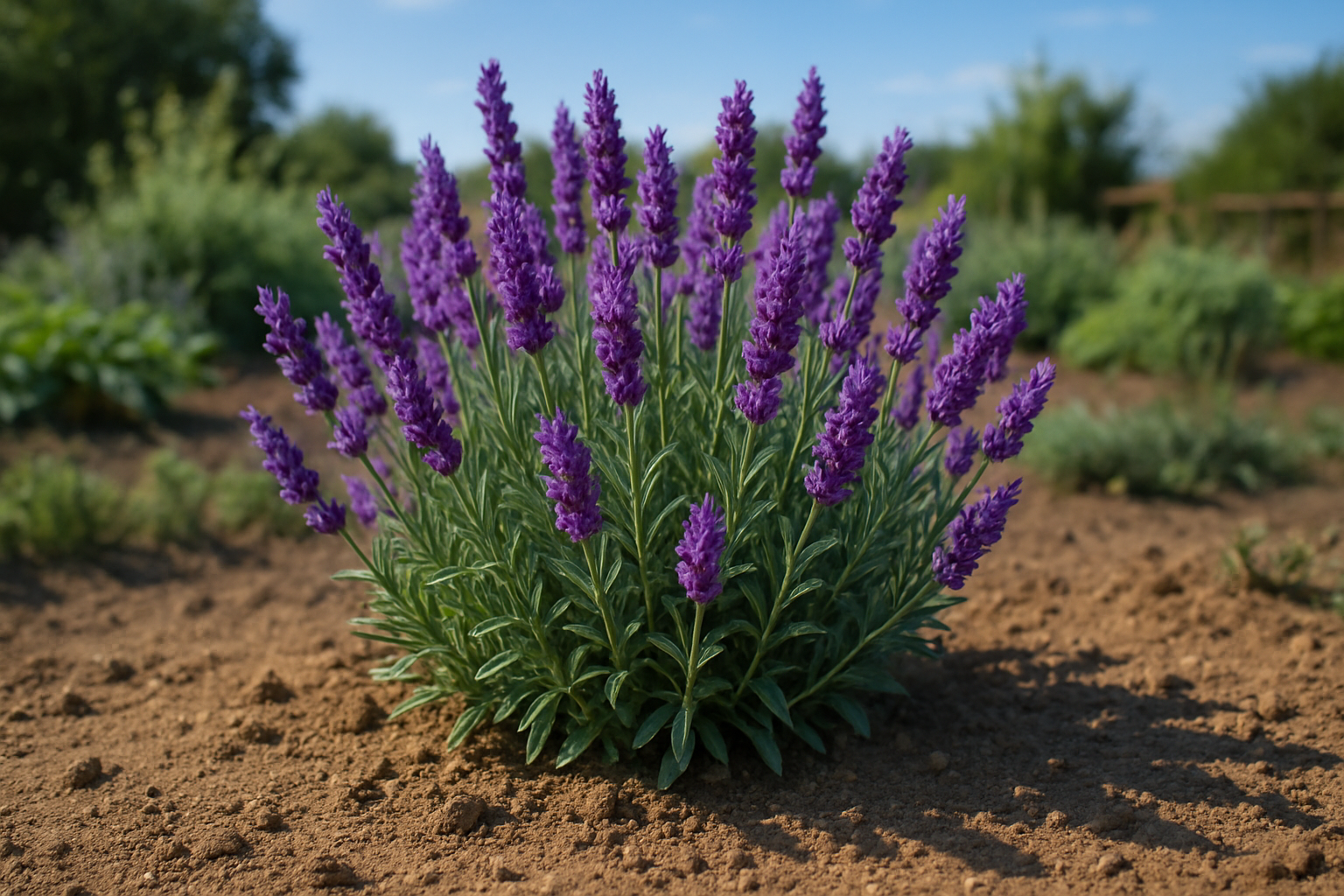Introduction
The lavender growth timeline is a key point of interest for many gardeners and plant lovers who dream of enjoying this fragrant, versatile herb in their own spaces. Known not just for its lovely purple blooms but also its relaxing scent and low maintenance, lavender is a favorite addition to home gardens, patios, and even windowsills. But before you can harvest your own lavender sachets or essential oils, it helps to know how long you’ll be waiting.
Understanding the lavender growth timeline is essential if you want to plan your garden effectively, set realistic expectations, or maximize the health and yield of your plants. This article will walk you through how long lavender takes to grow, whether you’re starting from seed—often the most rewarding but time-consuming option—or from cuttings, which can yield results more quickly.
We’ll look at key factors that affect how fast lavender matures, such as soil quality, sunlight, and care practices. To make things clear, we’ll break down the stages of development, offer tips to speed things up, and answer common questions about harvesting and maintenance. Whether you’re a beginner or an experienced gardener, this guide will help you master every step of the lavender journey.
Growth Stages of Lavender

Lavender’s journey from seed is a patient gardener’s delight, unfolding over months with visible milestones at each stage. Starting from seed, germination typically takes 14-28 days—expect tiny green shoots in well-drained, slightly alkaline soil, with temperatures between 65-70°F encouraging growth.
Once their first true leaves appear, seedlings crave plenty of light—ideally by a sunny window indoors or in a bright outdoor spot protected from harsh weather. At 2-3 inches tall, young lavender can be gently transplanted, but reaching maturity and blooming readiness takes 1-3 years, with regular pruning and proper spacing key for airflow and strong roots.
If you’re after faster results, try propagating from cuttings: snip healthy, non-flowering stems, remove lower leaves, and plant them in moist, sandy soil or perlite. Given the right humidity and warmth, roots often form in just 4-6 weeks—skipping the unpredictable germination stage and producing a true copy of the parent plant.
Indoors, lavender seedlings and cuttings benefit from steady warmth and controlled moisture, but might grow slower or leggier if lighting is weak, so consider supplemental grow lights. Outdoors, growth picks up once temperatures stay above frost, though spring winds and heavy rain can challenge fragile seedlings.
No matter your method, the establishment phase is crucial—avoid overwatering, and gradually toughen young plants before moving them outside. Lavender grown indoors might delay blooms or grow more compact, while outdoor plants usually thrive in full sun, maturing into fragrant, floral powerhouses by their second summer.
Whichever approach you choose, remember that careful observation and small adjustments make all the difference at each stage—and your patience will be rewarded with robust lavender ready for your garden or windowsill.
Factors That Affect Lavender Growth Rate
Lavender growth rate depends on several important factors, starting with the variety you choose. English lavender varieties (Lavandula angustifolia) are generally slower-growing but more cold-hardy, making them great for USDA zones 5-8. Meanwhile, French and Spanish types (Lavandula dentata, Lavandula stoechas) grow faster but require milder climates (zones 8-10).
Climate plays a big role—lavender thrives in warm, dry weather and may struggle in overly humid or cold regions. The right soil is another key factor: lavender prefers light, well-draining soil with a slightly alkaline pH. Heavy or clay soils retain too much moisture, which can stunt growth or cause root rot.
Sun exposure is crucial, as lavender demands at least six hours of direct sunlight daily. Shaded locations will produce leggy plants with fewer blooms. Temperature also matters—lavender likes warm days and cool nights, but extreme heat can stress young plants, while frost can damage tender new shoots.
Watering practices are another make-or-break factor. Although lavender is drought-tolerant once established, young plants need regular but moderate watering. Overwatering is a common mistake that leads to poor root development and increased disease risk. Make sure your plant’s roots never sit in soggy soil, using raised beds or gravelly mixes if drainage is a concern.
Common Issues That Slow Growth
- Overwatering
- Poor soil drainage
- Using fertilizers rich in nitrogen, which promote leafy growth rather than flowers
- Crowding plants too closely together, restricting airflow and increasing susceptibility to fungal problems
Tips for Encouraging Healthy Growth
- Select a variety suited to your region
- Provide plenty of sunshine
- Plant in gritty, well-drained soil
- Water sparingly
- Regularly check for yellowing leaves or stunted growth, as these are early signs of improper care that can be corrected before seriously affecting your lavender’s health and growth rate
Fastest-Growing Lavender Varieties
If you’re eager to see your lavender flourish in record time, some varieties outpace others and are perfect for impatient gardeners. English lavender (Lavandula angustifolia) is a classic favorite, prized for its fragrance. It generally takes two to three years to reach full maturity after planting, though some compact cultivars can flower in their very first summer.
For even quicker growth, French lavender (Lavandula dentata) and Spanish lavender (Lavandula stoechas) are top picks. These Mediterranean natives thrive in warmer climates and can often produce blooms within the first year if started from young plants or plugs.
French Lavender
French lavender, recognizable by its serrated leaves, is particularly fast-growing but less tolerant of cold, making it ideal for zones with mild winters.
Spanish Lavender
Spanish lavender, with its distinctive “rabbit ear” petals, also offers rapid early growth and repeat blooms throughout the season.
Tips for Growing Lavender Fast
- Start with healthy young plants rather than seeds
- Plant in well-draining soil
- Provide full sun exposure to maximize growth rates
- Water regularly but moderately
- Use minimal fertilizer to prevent legginess while encouraging lush, strong stems
If winters are harsh in your area, consider growing French or Spanish lavender in pots that can be brought indoors to protect them from frost. By choosing the right variety for your climate and following these tips, you’ll enjoy flourishing lavender beds much sooner than you might expect.
Tips to Encourage Faster and Healthier Lavender Growth
Growing lavender successfully starts with choosing the right spot—this sun-loving herb needs at least six hours of direct sunlight each day. When selecting a planting location, pick an area with well-draining soil; heavy or clay soils can be improved by mixing in sand, gravel, or organic compost to boost drainage and fertility.
Spacing plants about 18-24 inches apart ensures they have plenty of airflow, which is crucial for preventing mold and mildew. Good airflow also allows each lavender plant to soak up the maximum amount of sunlight, leading to strong, healthy growth.
Water deeply but infrequently, allowing the soil to dry out between waterings—overwatering is a common cause of root rot in lavender. Prune your plants every spring, cutting back about one-third of the growth to encourage bushier plants and more flower spikes.
For organic disease prevention, mulch around the base with straw or bark to reduce soil splashing, and use compost tea as a foliar spray to naturally boost plant immunity. If pests such as aphids appear, introduce beneficial insects like ladybugs or use a simple soap spray.
Finally, avoid high-nitrogen fertilizers, which can cause excessive leafy growth at the expense of fragrant blooms. By giving lavender space, sunlight, and well-tended soil, you’ll enjoy stronger plants that reward you with lush foliage and vibrant, aromatic flowers year after year.
Harvesting and Ongoing Care

Lavender typically begins to bloom in late spring to early summer, although the exact timing depends on your local climate and the variety you’re growing. For most gardeners, the best time to harvest lavender flowers is when the buds have formed but are just starting to open—this is when the oils are most concentrated and the fragrance is at its peak.
Use sharp, clean scissors or garden shears to snip stems early in the morning after the dew has dried but before the sun is at its strongest. Always leave several inches of green growth on each stem above the woody base to protect the plant and stimulate vigorous new shoots.
Once the initial harvest is complete, lavender plants benefit from regular light pruning. Remove spent flower stalks and any dead or damaged growth to keep plants tidy and promote airflow, which helps prevent fungal issues.
After bloom, lavender may appear tired or go into a brief dormancy, but don’t worry—this is normal. Avoid overwatering during this period; lavender prefers to stay on the drier side.
Watch for pests like spittlebugs or aphids; a firm spray of water or a gentle application of insecticidal soap often keeps them in check. Adding a light layer of mulch, such as gravel or bark chips, can discourage weeds and promote drainage without trapping excess moisture.
With consistent care and prompt attention to issues, your lavender will reward you with healthy growth and abundant blooms year after year.
Frequently Asked Questions About Growing Lavender
Many gardeners wonder if lavender can thrive indoors. The good news is that it’s possible with the right care—choose a sunny windowsill (south-facing is best), use well-draining soil, and avoid overwatering to prevent root rot.
Another common question is when lavender blooms. Most varieties flower from late spring to early summer, but you can encourage repeat blooming by deadheading spent flowers and ensuring your plants get full sun.
If your lavender is growing slowly, check for poor soil drainage or overwatering, as these are common culprits. Make sure pots have drainage holes and let the soil dry slightly between waterings. Also, ensure your plant gets at least six hours of direct sunlight each day—lavender loves heat and sun!
For beginners, resources like local garden centers, the Old Farmer’s Almanac website, or online forums such as GardenWeb can offer tailored advice and answer region-specific questions. Books like The Lavender Lover’s Handbook by Sarah Berringer Bader are fantastic for step-by-step guidance.
Starting small and observing how lavender responds to your home’s conditions is the best way to learn—don’t be afraid to experiment and reach out to gardening communities if you run into trouble.
